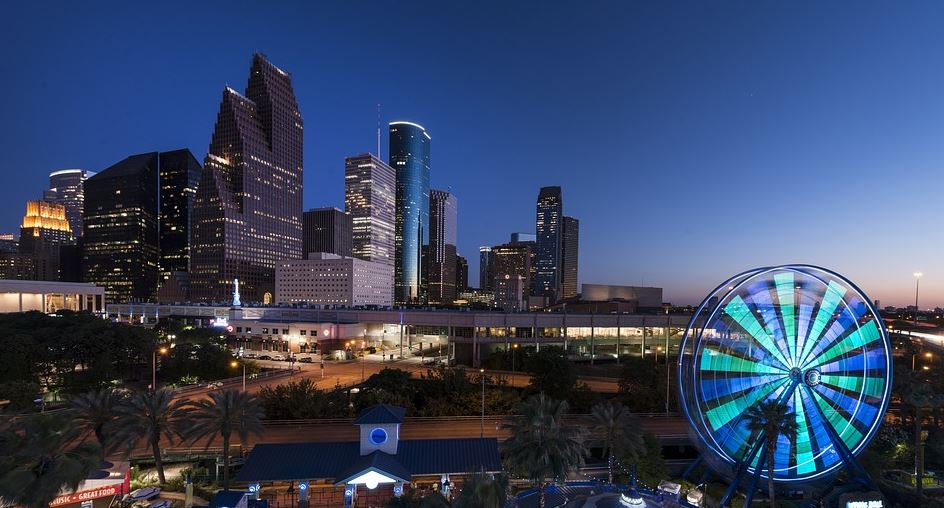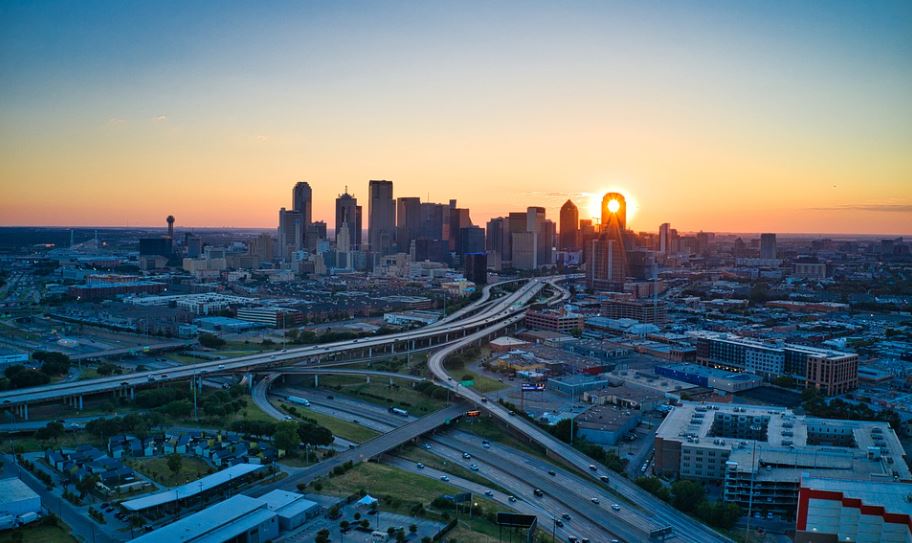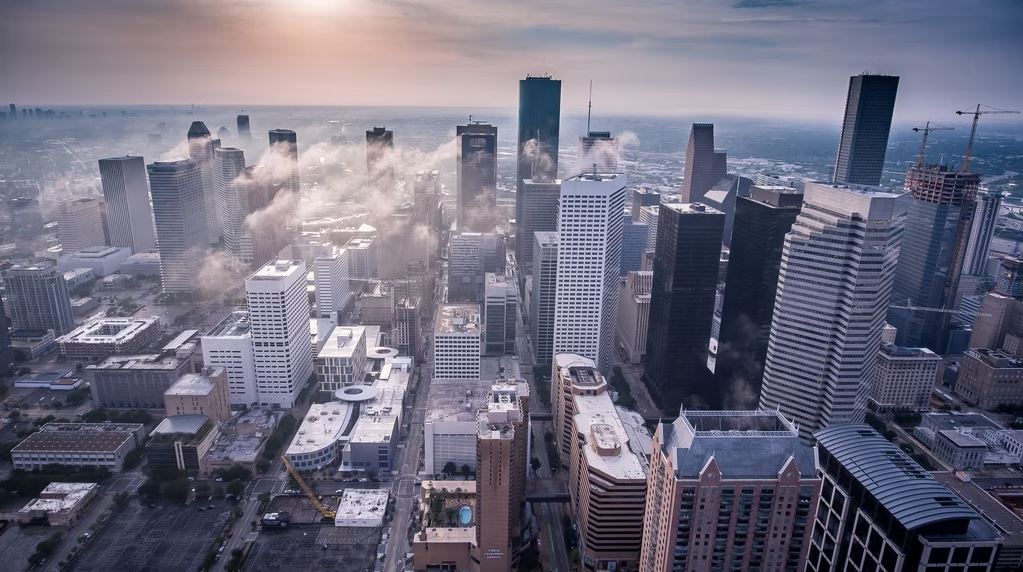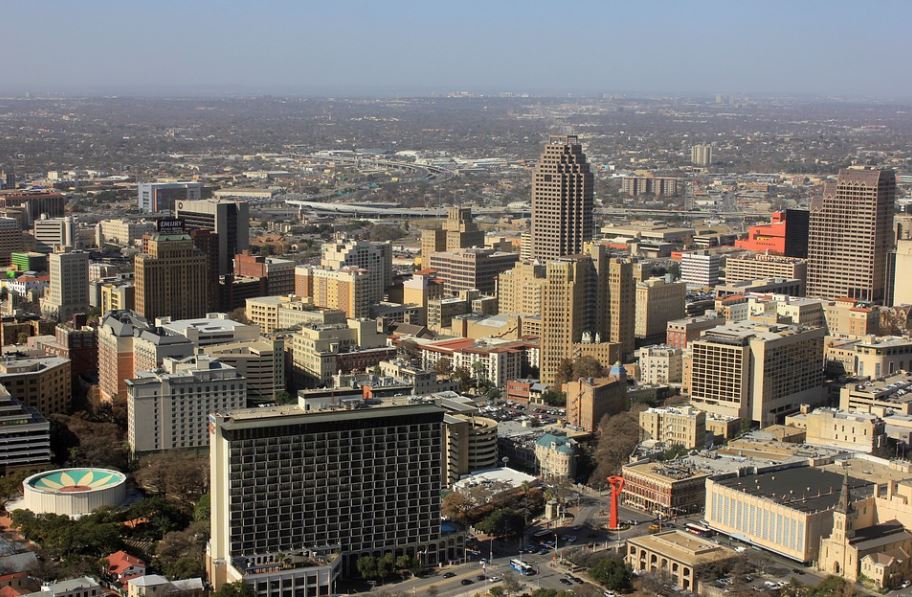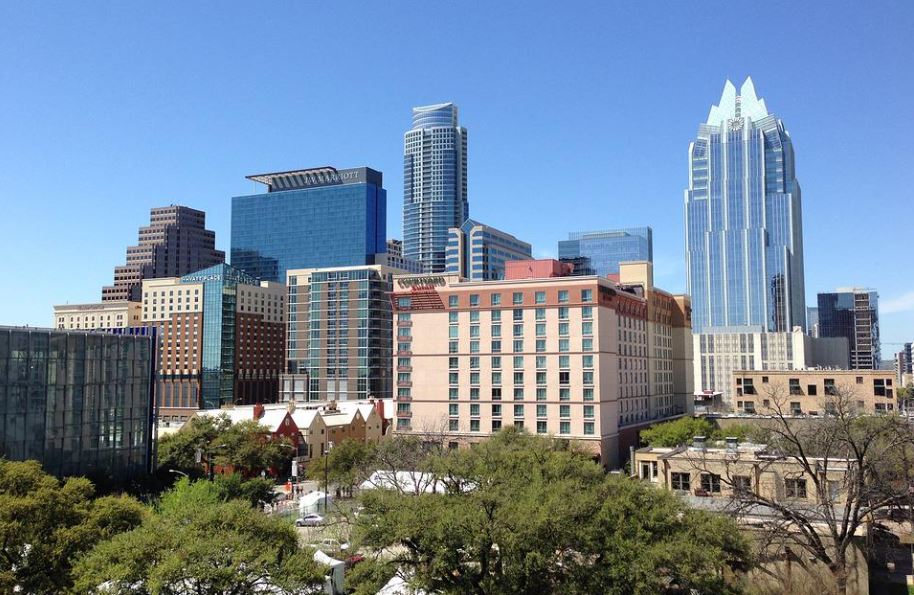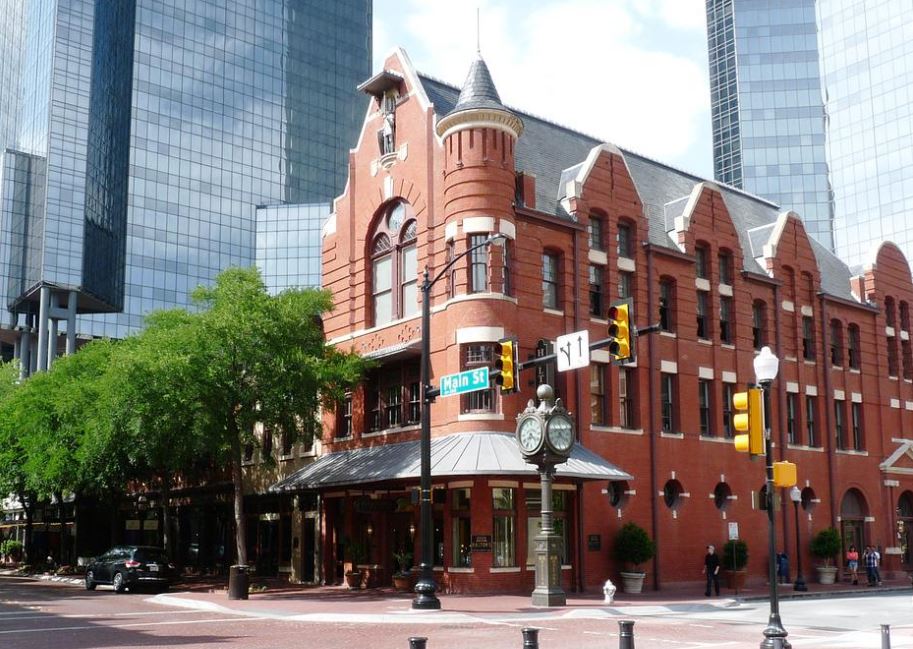Texas is home to many of the largest and fastest-growing cities in America. In fact, it is home to four cities that have more than a million people. The Lone Star State also has 36 cities with populations ranging between 100,000 and one million and 198 cities that have populations between 10,000 and 100,000. The ever-growing number of newcomers in Texas has made it the second most populated state in the United States.
If you are thinking of going to Texas for leisure, there are lots of wonderful places that you can visit around the state. Each city offers various activities for you to discover and enjoy. If you are planning to move to Texas, there are also lots of things that you need to learn and decide on. Among those is choosing which city to live in.
Texas has four major metropolitan areas, which are perfect if you looking for a job opportunity or simply a change of scenery. But what are these areas, and which of them is the best? If you are also curious, read on as we’re giving you comparisons of the major metropolitan areas in Texas.
What are the Major Metropolitan Areas in Texas?
The major metropolitan areas in Texas are all comprised of what is called the Texas Triangle. It is the urban megaregion consisting of the Dallas-Fort Worth, San Antonio, Houston, and Austin metropolitan areas. The Texas Triangle stands out as a distinctive model among the large urban megaregions of America.
Compared to other megaregions, the Texas Triangle grows faster. It is also growing apart from other megaregions in significant aspects, in its growing economic diversity, the relative youth of its population, and the realistic method of its local politics. It also represents a forerunner of the challenges and opportunities that all cities in the United States will face as they experience fast-rising ethnic diversity.
Dallas
Compared to other Texas cities, the cost of living in Dallas is quite higher. But as stated by residents, living in Dallas is worth the extra expense. It is home to both a blossoming urban center and lots of family-friendly residential neighborhoods. People in Dallas enjoy a high quality of life with great schools, lots of cultural attractions, and a robust local economy.
Houston
Houston is among the most affordable big cities in the United States. A lot of residents in the Houston area enjoy a remarkably low cost of living, along with top-notch public schools, affordable properties, great weather, and lots of big-city amenities.
San Antonio
The Spanish-style architecture, many cultural attractions, and historic charm make it among the most interesting places in America to live in. San Antonio is the second-largest city in Texas. It is popular for its restaurants that offer delicious foods, along with affordable neighborhoods and a thriving job market.
Austin
The fourth-largest city in Texas is Austin. It is also among the best places for people who are searching for jobs. Its strong tech sector, a high percentage of millennials, and booming local economy make it a great city for young professionals, as well as families.
Dallas-Fort Worth
The Dallas-Fort Worth metroplex, also known as DFW, is the fifth largest city in Texas. It is also the most classical city in the state due to its rodeos and Wild West cowboy culture. There are also lots of affordable residential neighborhoods here, along with top-notch schools, making it a great city to live in for families.
The Size of Each Major Metropolitan Area in Texas
Texas is known as the second largest state in America by both land area and population. With this, can you imagine how big each of its major metropolitan areas is? Here are the sizes of each major metropolitan area in Texas.
| Houston | 664.87 mi2 |
| San Antonio | 504.64 mi2 |
| Dallas | 385.91 mi2 |
| Austin | 271.82 mi2 |
| Fort Worth | 355.56 mi2 |
- Houston: The largest city in Texas is Houston. This sprawling city clocks in at a whopping 664.87 square miles. This means that it is roughly twice the size of New York City.
- San Antonio: The second-largest city in Texas is San Antonio. It is noted for its prevalence of Spanish architecture and historic venues. It has a land area of 504.64 square miles, which is still bigger than New York City.
- Dallas: This city is known as the Big D by locals, and it is just anyone’s definition of big. It has a land area of 385.91 square miles. It is composed of tall skyscrapers and a massive economy.
- Austin: Compared to the other cities in this list, Austin is actually smaller in size, including Fort Worth. But it has a lot of things that make it a great city to visit, including amazing nightlife venues, great food, and more.
- Fort Worth: It’s a bit strange to have Fort Worth on the list since it has expanded into a fellow major city, Dallas. In fact, the borders between Dallas and Fort Worth have started to blur, making it challenging for new locals to determine which city they are in. The Dallas-Fort Worth metropolitan area’s size is 355.56 square miles, making it one of the largest cities in Texas.
The Population of Each Major Metropolitan Area in Texas
The major metropolitan areas in Texas are also the biggest in terms of population. Let us take a look at the number of people living in each area and its growth in years.
| Metropolitan Area | Population (2022) | Population (2010) | Growth |
| Houston | 2,325,350 | 2,100,280 | 10.72% |
| San Antonio | 1,598,960 | 1,332,300 | 20.02% |
| Dallas | 1,348,890 | 1,200,350 | 12.37% |
| Austin | 1,028,220 | 806,164 | 27.54% |
| Fort Worth | 958,692 | 748,441 | 28.09% |
Houston
The largest city in Texas has a population of more than 2 million. It is also mostly considered the most attractive urban location in Texas. It is estimated that around 20% of the residents of Houston were not born in the United States. The majority of them integrate very well through common activities like sports, which makes Houston popular due to its athletic teams.
San Antonio
The metropolitan area of San Antonio has a population of more than 1.5 million, which is 20.02% more than its population back in 2010. No wonder it is the second-largest city in the state of Texas. It is a major military and sports city, and it encourages an active lifestyle for its residents.
Dallas
Dallas has an estimated population of 1.3 million, which is 12.37% greater than its population in 2010. Back then, Dallas relied on farming and trading livestock. But it has managed to diversify its economy further. Today, entertainment and financial services are growing in the city.
Austin
The population of Austin is more than 1 million. Its population has grown 27.54% more from 2010. It attracts people from various countries due to its excellent facilities and low housing costs. Compared to Dallas, it is smaller, but it offers great employment opportunities.
Fort Worth
Fort Worth’s population is almost around 950,000, which is 28.09% more than its 2010 population. It is a growing Texas city. It also represents a strong potential for economic growth right behind the most populous cities of Texas.
Race, Diversity, and Ethnicity in the Major Metropolitan Areas in Texas
Texas is also known to be a diverse state. Many people from different parts of the world have chosen to migrate to Texas as it offers wonderful opportunities, particularly for those who are seeking job opportunities or simply a change in their way of living and environment. With this, let us take a look at the race, diversity, and ethnicity in each of the major metropolitan areas in Texas.
Houston
Hispanic is the majority race in Houston, which is 37% of its residents. It is followed by white people at 36.6%. In the eastern areas of the city, there are more Hispanic people. People who identify as white are most likely to be living in the northeast places. Take a look at the data below to see how many people identify themselves as each of the following races in Houston.
| Self-Identified Race | Population |
| Hispanic | 37.0% |
| White | 36.6% |
| Black | 16.9% |
| Asian | 7.6% |
| Native American | 0.2% |
| Other | 1.8% |
Houston has a diversity score of 95 out of 100, making it more diverse than other cities in the United States. The west of the city is its most diverse area, while the least diverse areas are in the eastern parts of Houston.
San Antonio
Hispanic is also the overall majority race in San Antonio, which is at 55.2% of its residents. Next to it is also white at 33.9%. More Hispanic people live in the southern areas of San Antonio, while those who identify as white are most likely living in the northwest areas. The graph below shows the percentage of people in San Antonio who identify themselves as each of the following races.
| Self-Identified Race | Population |
| Hispanic | 55.2% |
| White | 33.9% |
| Black | 6.3% |
| Asian | 2.4% |
| Native American | 0.1% |
| Other | 2.0% |
San Antonio has a diversity score of 90 out of 100. It is also much more diverse than other U.S. cities. The east of the city is the most diverse area within the San Antonio metro area’s proper boundaries. The least diverse areas, on the other hand, are in the south parts of the city.
Dallas
White is the overall majority race in Dallas, which is at 46.9% of residents. The next most-common racial group in the city is Hispanic at 28.6%. There are more white residents in the northwest areas of the city, while more Hispanic people live in the southeast places. The graph below shows the percentage of people who identify themselves in each of the races in Dallas.
| Self-Identified Race | Population |
| Hispanic | 28.6% |
| White | 46.9% |
| Black | 15.3% |
| Asian | 6.6% |
| Native American | 0.3% |
| Other | 2.4% |
Dallas has a diversity score of 95 out of 100, making it a diverse city. The most diverse parts within the Dallas metro area’s proper boundaries are to the north of the city. The least diverse, on the other hand, are the areas in the northwest parts of the city.
Austin
White is also the overall majority race in Austin at 52.4%, and it is followed by Hispanic at 32.3%. Most white people reside in the west areas of Austin, while Hispanic people are mostly living in the southern parts. Take a look at the graph below to see the percentage of residents for each race that they identify themselves with.
| Self-Identified Race | Population |
| Hispanic | 32.3% |
| White | 52.4% |
| Black | 6.9% |
| Asian | 5.6% |
| Native American | 0.2% |
| Other | 2.5% |
The diversity score of Austin is 94 out of 100, making it more diverse than other US cities. The most diverse part of the Austin metro area’s proper boundaries is to the east of the city. The least diverse part is in the southeast areas of the city.
Fort Worth
The majority race in Fort Worth overall is Hispanic, which is at 37.4% of residents. It is followed by white at 37.3%. Most of the Hispanic people live in the northern parts of the city, while those who identify as white are usually living in the central places of Fort Worth. Check the graph below to see the percentage of residents that identify themselves as each of the following races in Fort Worth.
| Self-Identified Race | Population |
| Hispanic | 37.4% |
| White | 37.3% |
| Black | 19.2% |
| Asian | 3.6% |
| Native American | 0.3% |
| Other | 2.3% |
The diversity score of Fort Worth is 95, making it much more diverse compared to other cities in the U.S. The northeast part of the city is the most diverse area within Fort Worth, while its central parts are the least diverse areas.
Age by Nativity in Each of the Major Metropolitan Areas in Texas
The median age of the people living in Texas also varies per metropolitan area. It means that there can be younger foreign or native-born citizens in one city compared to another. If you are curious about this, check out the data below.
| Metropolitan Area | Median Native-Born Age | Median Foreign-Born Age | Median Age of All People (2019) |
| Houston | 29 | 42 | 33.4 |
| San Antonio | 32 | 45 | 34.4 |
| Dallas | 30 | 40 | 32.9 |
| Austin | 32 | 39 | 33.9 |
| Fort Worth | 30 | 43 | 32.8 |
Houston
The median age of all people in Houston in 2019 was 33.4. Native-born citizens with a median age of 29 were commonly younger compared to foreign-born citizens, with a median age of 42. However, people in Houston are getting older. It’s because, back in 2018, the average age of all residents in the city was 33.
San Antonio
In San Antonio, the median age of all people in 2019 was 34.4. The median age of native-born citizens was 32, which is younger than foreign-born citizens with a median age of 45. Like in Houston, people in San Antonio are also getting older because back in 2018, the average age of all San Antonio residents was 34.
Dallas
The median age of all people in Dallas back in 2019 was 32.9. Native-born citizens with a median age of 30 were mostly younger than foreign-born citizens with a median age of 40. But unlike in Houston and San Antonio, people in Dallas are getting younger, as back in 2018, the average age of all Dallas residents was 33.
Austin
In Austin, the median age of all people back in 2019 was 33.9. Native-born citizens with a median age of 32 were largely younger compared to foreign-born citizens with a median age of 39. People in Austin are getting younger as in 2018, the average median age of all residents there was 34.
Fort Worth
The median age of all people in Fort Worth in 2019 was 32.8. Native-born citizens with a median age of 30 were mainly younger than foreign-born citizens with a median age of 43. People in Fort Worth are also getting younger because the 2018 average age of all Fort Worth residents was 33.
The Climate in Each of the Major Metropolitan Areas in Texas
If you are planning to visit or move to the major metropolitan areas in Texas, you should also learn about what kind of climate each of them has. Read on below to find out more about it.
Metropolitan Area | Inches of Rain on Average per Year | Inches of Snow on Average per Year | Average Number of Sunny Days per Year | Most Pleasant Months | Least Pleasant Months |
Houston | 53 inches | 0 inches | 204 | April, March, and October | July and August |
San Antonio | 33 inches | 0 inches | 220 | April, October, and November | July and August |
Dallas | 39 inches | 1 inch | 234 | April, May, and October | July and August |
Austin | 35 inches | 0 inches | 228 | April, October, and November | July and August |
Fort Worth | 37 inches | 1 inch | 229 | April, May, and October | July and August |
Among the major metropolitan areas in Texas, Houston gets the most rain per year as its average rain annually is 53 inches. That is greater than the US average of 38 inches of rain per year. Also, snow does not happen every year in these Texas cities. In fact, anything more than one to three inches of snow in most of these metropolitan areas is significant.
Dallas gets the greatest number of sunny days among these cities, with an average of 234 sunny days in a year. It is followed by Fort Worth with 229 days, Austin with 228 days, San Antonio with 220 days, and Houston with 204 days.
If you are planning to visit these cities for a tour, the most pleasant month to go is April and October, as the climate during these times is mostly mild and comfortable. Many people do not like to visit these cities, or Texas in general, in August, as it is the hottest month in the state.
The Pros and Cons of Living in Each of the Major Metropolitan Areas in Texas
To sum up the comparisons of the major metropolitan areas in Texas, let us take a look at the advantages and disadvantages of living or visiting each of these cities.
Metropolitan Area | Pros | Cons |
Houston |
|
|
San Antonio |
|
|
Dallas |
|
|
Austin |
|
|
Fort Worth |
|
|
Houston is among the best cities in the world where you can live or travel to. But there are also upsides and downsides to living there. One of the best things that Houston offers is the number of restaurants and food options it has, which is perfect for travelers who are looking for something new to try. In addition to that, Houston is also known for its culture. The art around the city is truly beautiful as it varies from graffiti walls to amazing sculptures. You can also ensure that there is always something to do in this city. Some of these include bowling, visiting parks, driving around downtown, trying out new coffee shops, and more.
There are just a couple of downsides when it comes to living in or visiting Houston. One of those is the weather. In this city, it does not get cold in the winter, fall, and spring, but the summer season is boiling hot. Also, if it rains once, you know that it is going to rain for days. Another downside is the traffic in the city, particularly during rush hour. When you get stuck in traffic, do not expect that you will be home for at least an hour and a half.
San Antonio
San Antonio is known to be the 7th largest city in the United States, and it is also among the oldest. It is located in the heart of South Texas and has a lot to offer to its residents. One of the great things about this city is that its population is extremely diverse. It is perfect if you are searching for a young and developing city that has various cultural aspects. In addition to that, the cost of living here is below-average. This means that compared to other cities, such as Houston, the costs of rent, utilities, transportation, and basic goods in San Antonio are much lower.
San Antonio also has a vast cultural and historical background. With this, it offers lots of cultural activities and events that people of all ages can appreciate. Another great thing about living in San Antonio is the great balance it has between the amenities of a metropolis and the mindset of a small city, and the residents here are mostly friendly.
When it comes to the cons, one of the main downsides of living in San Antonio is the challenging summer weather. It offers mild and short winters and uncomfortable summer days. There are also some parts of San Antonio that have high crime rates. Therefore, being careful when choosing your new neighborhood is best. The traffic in this city is also not that great due to the high number of cars and a limited number of roads and highways. Lastly, San Antonio is quite far from natural attractions. The closest beach in the city is about 4 hours away by car, and there are no mountains nearby.
Dallas
Dallas is a city that offers a wealth of economic gains. However, like any other city, it also has a unique set of challenges and advantages that you should know about. One of the great things about Dallas is it offers a low cost of living. When compared to other large cities, the cost of living in Dallas is relatively low. In 2019, the average hourly wage earned by people living in Dallas was $27.01, based on the Bureau of Labor Statistics, and that is already for a four-person household with two working adults and two children. By comparison, cities like New York require a living wage of $20 for a single person living on their own.
There are also lots of job opportunities in Dallas, as it is home to many top industry leaders in financial services, oil, and technology. Traveling around the city is also convenient here as it is a developed metropolis. In fact, the walkability of Dallas is 24th place in the most walkable town in the United States and 3rd in Texas. It also offers a rapid transit system. For tourists, Dallas also offers many restaurants and beautiful places to visit.
Traffic is also one of the downsides of Dallas, but it is not as chaotic and cramped compared to much larger metropolises like Los Angeles. But the drive can still be overwhelming for those who are not used to driving near the area. Also, intrastate travel can be challenging. For instance, if you want to go to El Paso, it may take you around 9 hours to get there without stops. Like in other Texas city, the summers in Dallas is also brutal. You also need to prepare for hurricanes and tornadoes.
Austin
The city of Austin is famous for its music and food. It is popular for its barbecue, among other delicious food options. Aside from that, its lively music scene also attracts many visitors. Live music can be experienced in many venues in the city, such as restaurants, bars, and theaters. Aside from that, the technology scene in Austin is also fast-growing. This means that employment opportunities in this city are high, along with a low cost of living. Also, if you love nature and outdoor activities, Austin is perfect for you. There are lakes that you can visit for boating, rafting, swimming, and fishing, along with different parks for hiking and biking.
One of the drawbacks of living in Austin is the hot and humid weather. Aside from that, the traffic here is also heavy. Therefore, living close to your workplace is a must for a shorter commute. Also, the public transportation in Austin is limited to buses only. There are no public metro or other train systems here. Therefore, you can only either ride the bus or drive your own car.
Fort Worth
Fort Worth is one of the most classic cities in the United States. There are also multiple pros and cons if you are planning to visit or move to this city. Like in Dallas, there are many companies in Fort Worth that are perfect for those who are seeking job opportunities. The cost of living in this city is also moderately-rated. Shopping is affordable here, as well as restaurants and entertainment. This city also has a great taste for art and culture. This means that there are lots of museums that you can visit around the area.
Like in other Texas cities, the weather is also one of the drawbacks of living in Fort Worth due to the hot summers. Aside from that, traffic is also a problem for many residents. There are also some neighborhoods in Fort Worth with higher crime rates than others. Therefore, if you are planning to move here, ensure that you find out about the kind of neighborhood you are moving into.
Conclusion
The major metropolitan areas in Texas are indeed among the best cities that you can visit or move into in the United States. All of them are well-developed, continuously growing, and diverse. Each of these metropolitan areas has something unique to offer, but like other places, they also have some downsides. But nonetheless, the positive characteristics of each city are still greater than the negatives. We hope this post helped you learn more about the major metropolitan areas in Texas.

